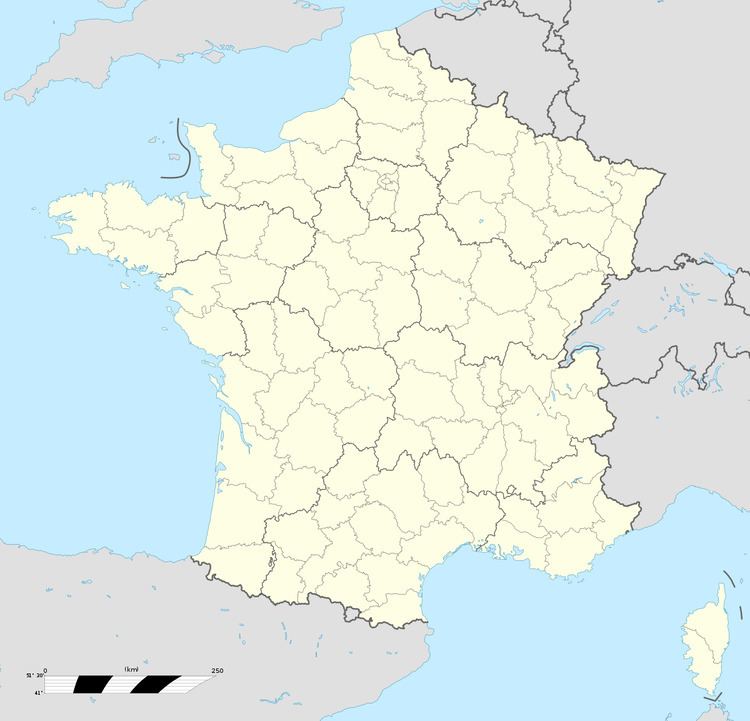Built 1876-1879 Address 57140 Woippy, France | Fate not used | |
 | ||
Type fort of type von Biehler Similar Fort de Bellecroix, Les Carrières, Fort Queuleu, Fort Saint‑Juli, Fort des Bordes | ||
The Feste Kameke, renamed fort Déroulède by the French in 1919, is a military installation near Metz. It is part of the first fortified belt of forts of Metz and had its baptism of fire in late 1944, when the Battle of Metz occurred.
Contents
Historical context
The first fortified belt of Metz consists of forts de Saint-Privat (1870), of Queuleu (1867), des Bordes (1870), Saint-Julien (1867), Gambetta, Deroulede, Decaen, Plappeville (1867) and St. Quentin (1867), most of them unfinished in 1870, when the Franco-Prussian War bursts out. During the Annexation Metz, will oscillate between a German garrison of 15,000 and 20,000 men at the beginning of the period, and will exceed 25,000 men just before the First World War. Gradually Metz becomes the first stronghold of the German Reich.
Construction and facilities
The Feste Kameke is designed in the spirit of the "detached forts" concept developed by Hans Alexis von Biehler in Germany. The goal was to form a discontinuous enclosure around Metz with strong artillery batteries spaced with a range of guns. The fort was built by German engineers between 1876 and 1879.
Successive assignments
From 1890 the stationing of the garrison is guaranteed by the fort troops Corps XVI stationed at Metz and Thionville. Invested by the French army in 1919, the fort Kameke is renamed "fort Déroulède". It was taken again in 1940 by the Germans. The German army occupied the fort during 1940-1944. After the war, the fort was taken over by the French army. Until 2002, the fort served as a repository of chemical weapons, bombs or unexploded shell of phosgene or sulfur mustard, mainly dating from World War I. The fort is now not used.
World War II
In early September 1944, the beginning of the Battle of Metz happens. The German command integrates the defensive system set up around Metz. On September 2, 1944, Metz was declared in effect by the Reich fortress Hitler. The fortress must be defended to the last by German troops, whose leaders were all sworn to the Führer. The next day, September 3, 1944, the troops of General Krause took position on a line from Pagny-sur-Moselle to Mondelange, passing to the west of Metz by Chambley, Mars-la-Tour, Jarny and Briey. After an initial withdrawal on 6 September 1944, the German lines now rest firmly on the forts of Metz.
The US offensive, launched September 7, 1944, on the west line forts of Metz is cut short. American troops will eventually stop on the Moselle, despite taking two bridgeheads south of Metz. The forts being better defended than they had thought, US troops are now out of breath. General McLain, in agreement with the General Walker, decided to suspend the attacks, pending new plans of the General Staff of 90 Infantry Division. When hostilities resumed after a rainy month, the soldiers of the 462 Volks-Grenadier-Division still firmly hold the forts of Metz, though supplies are more difficult under artillery fire and frequent bombings.
On November 9, 1944, as a prelude to the assault on Metz, as many as 1,299 heavy bombers, B-17s and B-24s, dump 3,753 tons of bombs, and 1,000 to 2,000 "livres" on fortifications and strategic points in the combat zone of IIIis army. Most bombers, having dropped bombs without visibility at over 20,000 feet, miss their objectives. In Metz, 689 loads of bombs drop over the seven forts of Metz, designated as priority targets, merely causing collateral damage. At Thionville and at Saarbrücken the result is inconclusive, proving once again the inadequacy of massive bombings on fortified targets. On November 15, 1944, on a cool, damp morning, 377th Infantry Regiment of 95th American division, leaves Maizières-lès-Metz, entering the north of Metz in Woippy before being stopped by gunfire from fort Déroulède (Kameke), Gambetta (Hindersin), and Saint-Julien (Manteuffel). Facing them, giving desperate resistance, are the men of 1515 Grenadier-Regiment « Stössel » of the 462th Volks-Grenadier-Division, reinforced by a reserve company, the 38th SS-Panzergrenadier Regiment. On November 17, 1944, all the forts held by German troops, in the northwest sector of Metz, are encircled. On 21 November 1944, 377th Infantry Regiment of 95th US division invests the old fort Kameke.
The fort Jeanne-d’Arc was the last of the forts of Metz to surrender. Determined German resistance, bad weather and floods, inopportunity, and a general tendency to underestimate the firepower of the fortifications of Metz, have helped slow the US offensive, giving the opportunity to the German Army to withdraw in good order to the Saar. The objective of the German staff, which was to stall US troops for the longest possible time before they could reach the Siegfried Line, was largely achieved.
